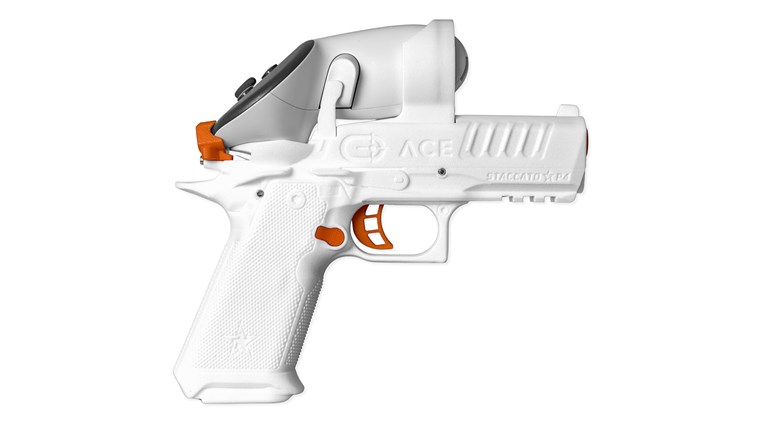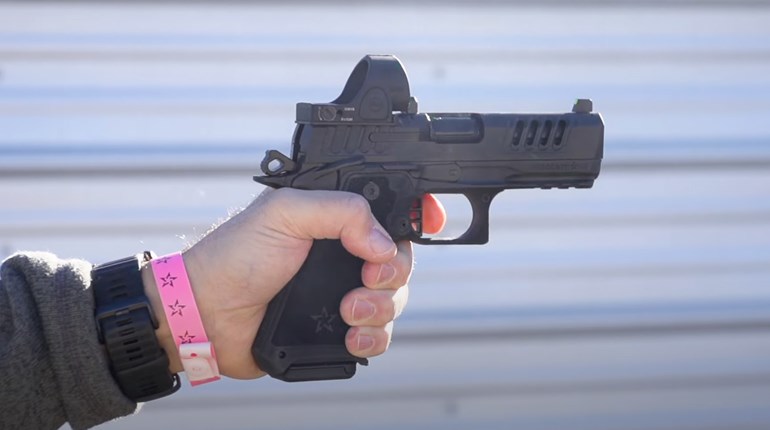
Who hasn’t wanted to utter the immortal words, “Bond. James Bond,” while removing a clandestine rifle from a briefcase? With the Kel-Tec SUB-2000 series of pistol-caliber rifles, originally introduced in 2001, the ability to discreetly carry a longarm chambered in a pistol caliber became a reality. The SUB-2000 accomplished this with a simple hinge located at the breech, rendering the firearm inoperable when folded.

Fans of pistol-caliber carbines found a lot to like with this little folder. It could be ordered compatible with a number of common handguns—the Glock G17 and G19, SIG Sauer’s P226, the Smith & Wesson Model 59 and the Beretta 92 were the 9 mm counterparts—allowing a carbine and pistol combination sharing not only fodder but magazines, as well. When you’ve already got a dozen or more magazines for your handgun, being able to use them in a carbine as well is an unexpected bonus.
The SUB-2000 was not without its detractors, though. The sights were rudimentary, at best—the front sight was essentially colored, translucent plastic. The length-of-pull was fixed, although in a carbine that size there’s not much room for change. Deploying the carbine from the folded position required precise activation of a small release button, which is easy on the range but not so easy under stress.

Other factors brought up included the inability to add optics, lights or accessories, an area quickly filled in by the aftermarket. The carbine folds in an odd manner, using the trigger guard as the release lever, much like a Russian Makarov is taken down for cleaning. Lastly, those that wanted to suppress the SUB-2000 (often sharing a suppressor already purchased for a handgun) were pretty much out of luck—while it was theoretically possible to get the barrel threaded, it was an exercise in how persistent one could be in finding the right gunsmith.
Kel-Tec addressed the bulk of these considerations when it released the second generation of the SUB-2000. The plastic front sight was replaced with one obviously cribbed from the AR-15, the stock was redesigned with three separate positions (although changing length-of-pull does require some time) and the lever that releases the SUB-2000 from the folded position was made significantly larger and easier to activate. A railed fore-end was added, with Picatinny rails at the six- and 12-o’clock positions and the barrel was threaded with standard ½-28 tpi threading (rather cleverly, as initial inspection of the test subject overlooked this new feature).

Now, I happen to own a first-generation SUB-2000 that I’ve put thousands of rounds through. It’s accurate enough, has been crazy reliable and just keeps chugging along with (very) minimal cleaning. I had high expectations for the next-generation model, and it met or exceeded them handily. On the range it digested a wide variety of 9 mm ammo with nary a hiccup, everything from steel-cased bargain-basement fodder of indeterminate origin to light- and heavy-for-caliber specialized offerings. All went in, out and downrange with no glitches. Accuracy was excellent in either offhand or rested positions, with 10-yard groups obliterating the “X” ring under rapid-fire conditions.
That’s a point worth considering when asking “why a pistol-caliber carbine?” Aside from the significant boost in velocity from the 16.25-inch barrel and the convenience of feeding from the same magazines, the carbine brings an inherently more-stable platform for longer ranges. Add in that it can fold to fit in a briefcase or messenger bag—or inside a vehicle’s lock box inside a trunk—and it can be carried with ease without arousing undue attention. As a bug-out carbine, or simply a little extra insurance in amongst your daily kit, the SUB-2000 makes a lot of sense.

As long as you recognize what the SUB-2000 is—a handy, reliable and inexpensive carbine that folds for transport and shares magazines with many popular pistols—and is not—as accurate or customizable as an AR-15, for example—you can find a place for it in your armory. There’s no need to worry about reliability or accuracy (not for a 9 mm carbine, certainly), and while the ergonomics could still use some fine-tuning, it works just fine as is, even for extended range sessions.
The first time you extract it from a briefcase, fold it into the open position, insert a magazine and prepare to fire, you can think, even momentarily, about just how cool it is to have a folding carbine at the ready. Chewing out the center of a target with boring regularity just puts the cherry on top of the metaphorical sundae.





































